Whether you keep a large basement root cellar or just a root cellar barrel with a few veggies, root cellars are essential structures for anyone interested in food preservation, sustainability, and self-sufficiency. Buried deep in the earth, root cellars utilize the natural insulating properties of the soil to keep foods cool without wasting any electricity on refrigeration. That means installing a root cellar can save you money on your electricity bill, but root cellars also make homes more eco-friendly too!
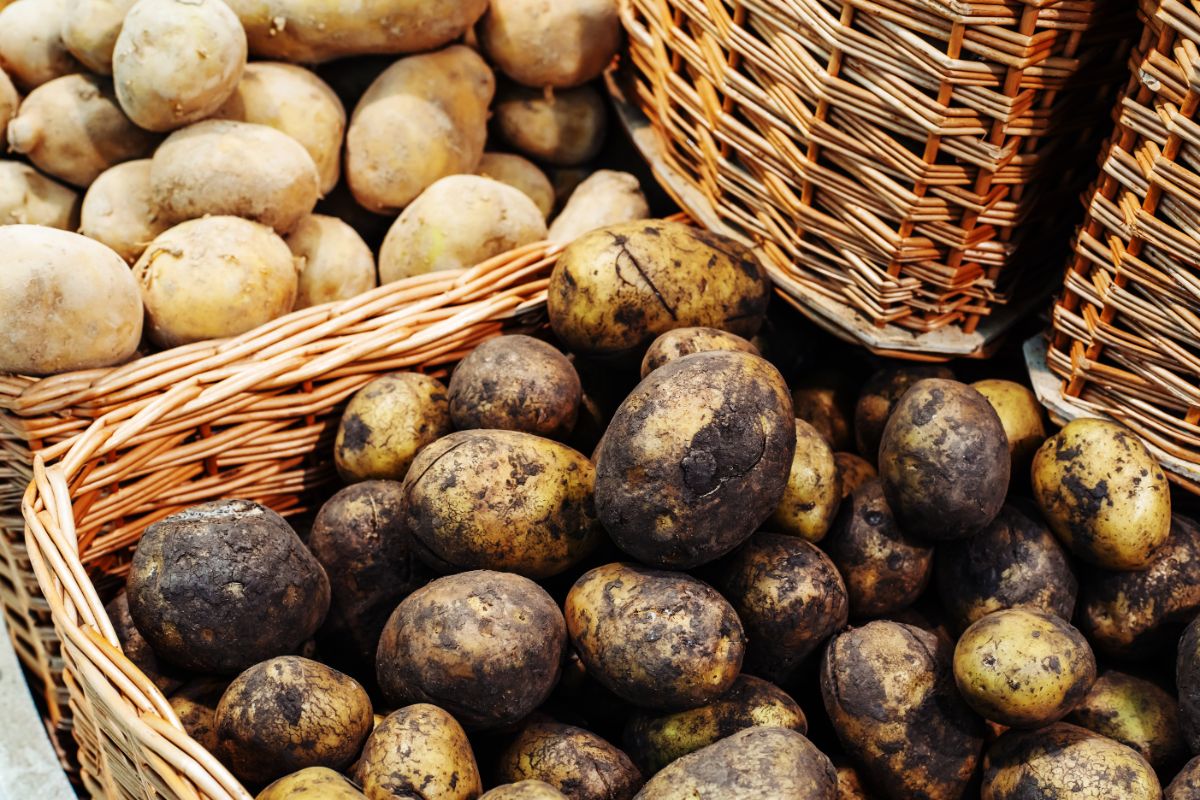
But while root cellars are undoubtedly useful structures, if you want to get the most out of your cold storage, it’s important to know how to use a root cellar correctly. In this guide, we’ll cover proper harvesting and storage tips as well as guidelines for creating your own “root cellar garden.” If you’re ready to master this old-timey art and keep your onions, carrots, pumpkins, and other homegrown produce fresh through the winter months, read on!
Jump to:
- 18 tips for storing garden produce in a root cellar
- 1. Choose the right crops for your “root cellar garden.”
- 2. Harvest at the right time.
- 3. Maintain the natural condition of your crops.
- 4. Maintain the right environment.
- 5. Only store pristine produce.
- 6. Cure vegetables that need curing.
- 7. Don’t wash produce.
- 8. Harvest and handle with care.
- 9. Use the right storage containers.
- 10. Store root vegetables in moist sand.
- 11. Keep vegetables and fruit separate.
- 12. Separate strong-smelling vegetables.
- 13. Know where to place different foods.
- 14. Space veggies apart.
- 15. Wrap fruit to contain ethylene gas.
- 16. Monitor temperature and humidity.
- 17. Check crops often.
- 18. Prevent freezing!
- Frequently asked questions
- Summary
18 tips for storing garden produce in a root cellar
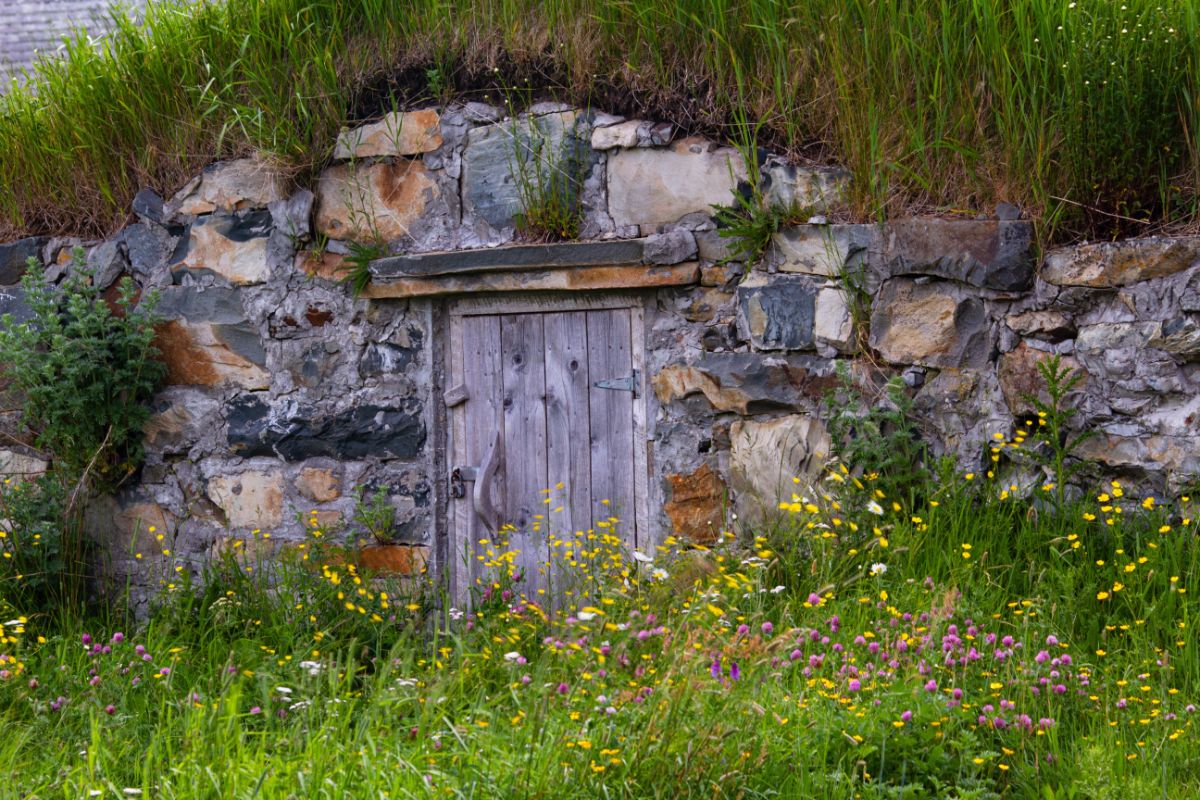
Some crops store longer than others in root cellars. But by following proper storage protocols, you can keep vegetables like garlic and potatoes in root cellars for up to 8 months. That’s pretty incredible, considering that root cellars don’t need any electricity at all!
Follow along with the food storage tips below and stow away your crop of pumpkins, onions, carrots, beets, and other fruits and veggies for the long winter season ahead. When you gather that delicious, fresh produce from your root cellar in mid-winter, you’ll be glad you studied up on root cellaring!
1. Choose the right crops for your “root cellar garden.”
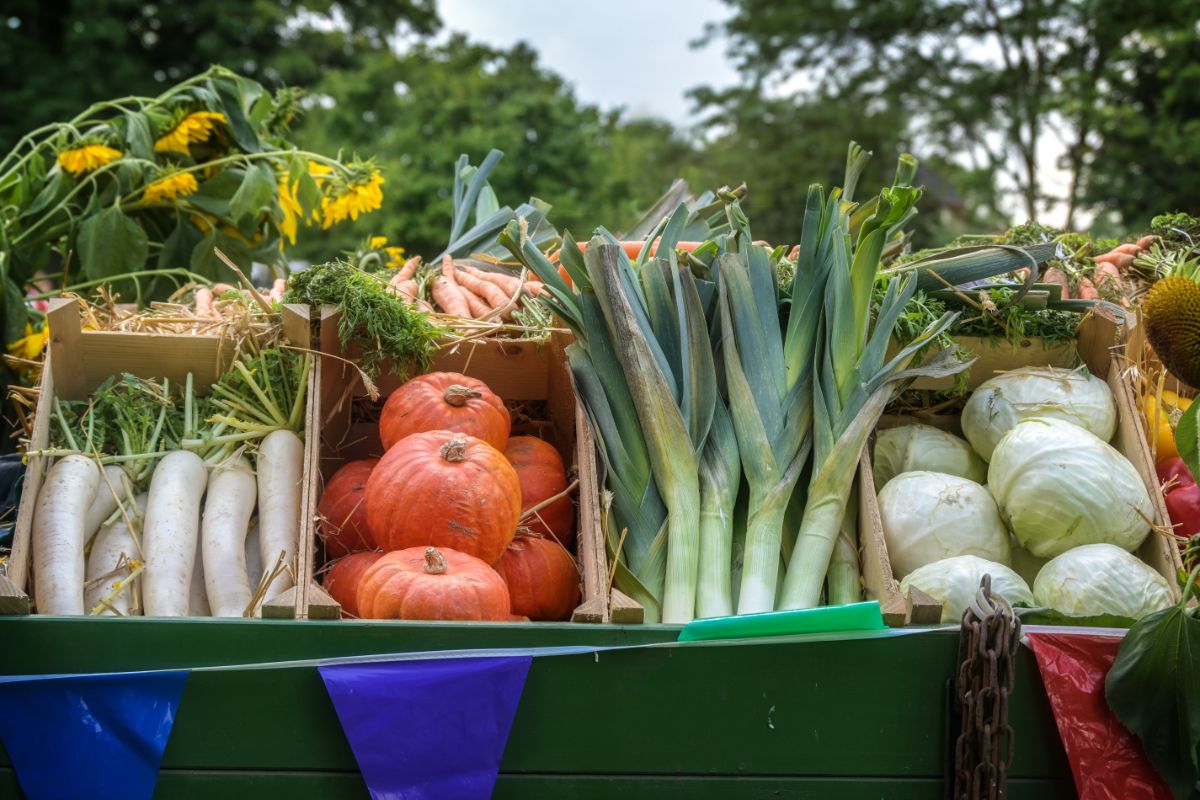
Not all foods store well in root cellars. For instance, leafy greens and lettuce are too delicate to stay fresh for long without refrigeration. However, tough and sturdy crops like pumpkins, winter squash, and potatoes are ideal for root cellaring.
Depending on your gardening style, you can grow a mixture of vegetables and fruit in your garden, or you can choose to grow only foods that will keep well in winter storage. Carrots, cabbages, and other food crops that are harvested late are often the best options for root cellaring. You may also want to order seeds that are designated in seed catalogs as “good for storage,” or you may want to select russetted apples and potatoes, which are known to keep longer in root cellars than crops with thinner skins.
Most of the food crops kept in winter root cellars are harvested in autumn, so you may want to plant a late crop of veggies just in time for a late-season harvest. That way, you can gather the last of your carrots and root veggies just before the cold winter sets in and put them away in your root cellar for safekeeping.
While there are other crops that can be deliberately grown for root cellaring, some of the most popular plants to grow in a root cellar garden include:
- Carrots
- Beets
- Turnips
- Winter radishes
- Winter squash
- Pumpkins
- Onions
- Garlic
- Heading cabbage
2. Harvest at the right time.
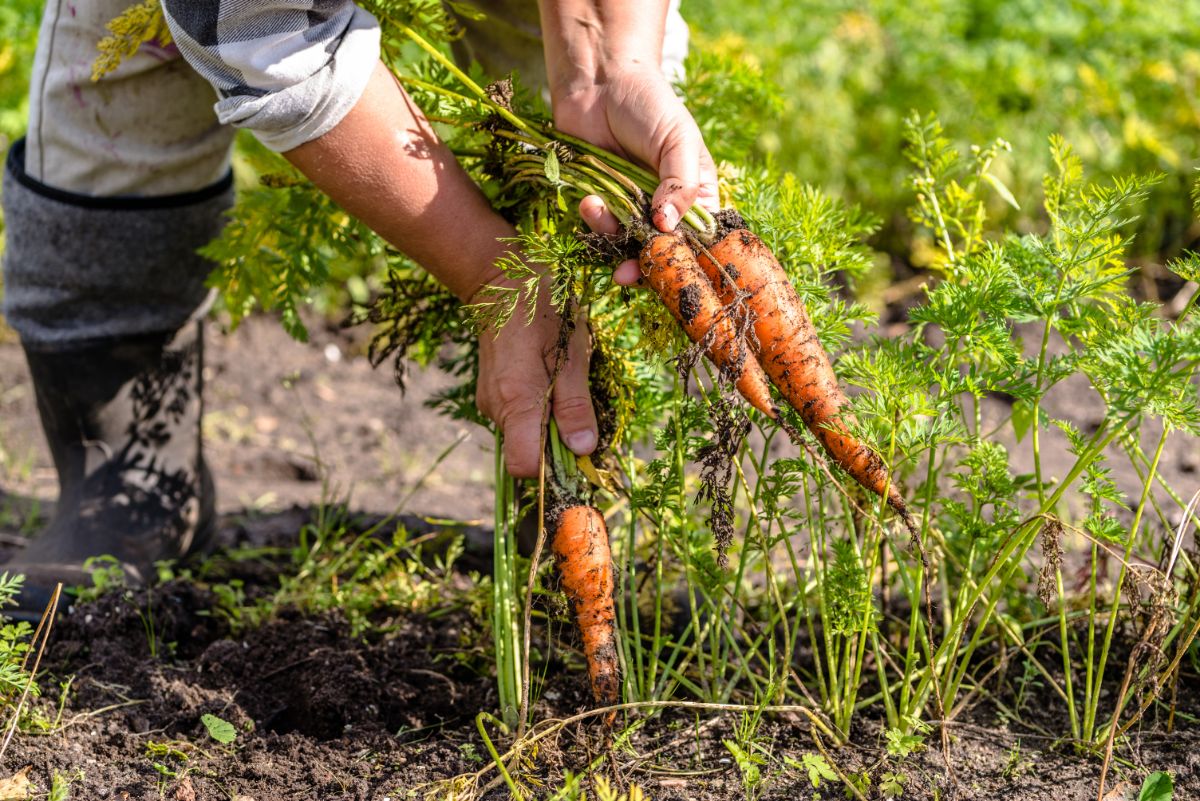
If you want to keep foods fresh for as long as possible, it’s a good idea to harvest food crops as late in the season as you can. Of course, don’t leave sensitive crops in your garden if you know frost is coming, but cold hardy vegetables, like Brussels sprouts and cabbage, can survive a light frost too. In fact, some vegetables actually get sweeter after they experience a light frost!
The best time to harvest crops will vary depending on the types of foods you’re growing, but many of the most common vegetables and fruit stored in root cellars are harvested in early to late fall. Check your seed packets for information about days to harvest, and try out season extension products like frost covers and cloches to keep your produce in your garden a bit longer. After all, if you wait a few extra weeks to harvest your crops, they may just stay fresh for a few extra weeks in your root cellar, too!
3. Maintain the natural condition of your crops.
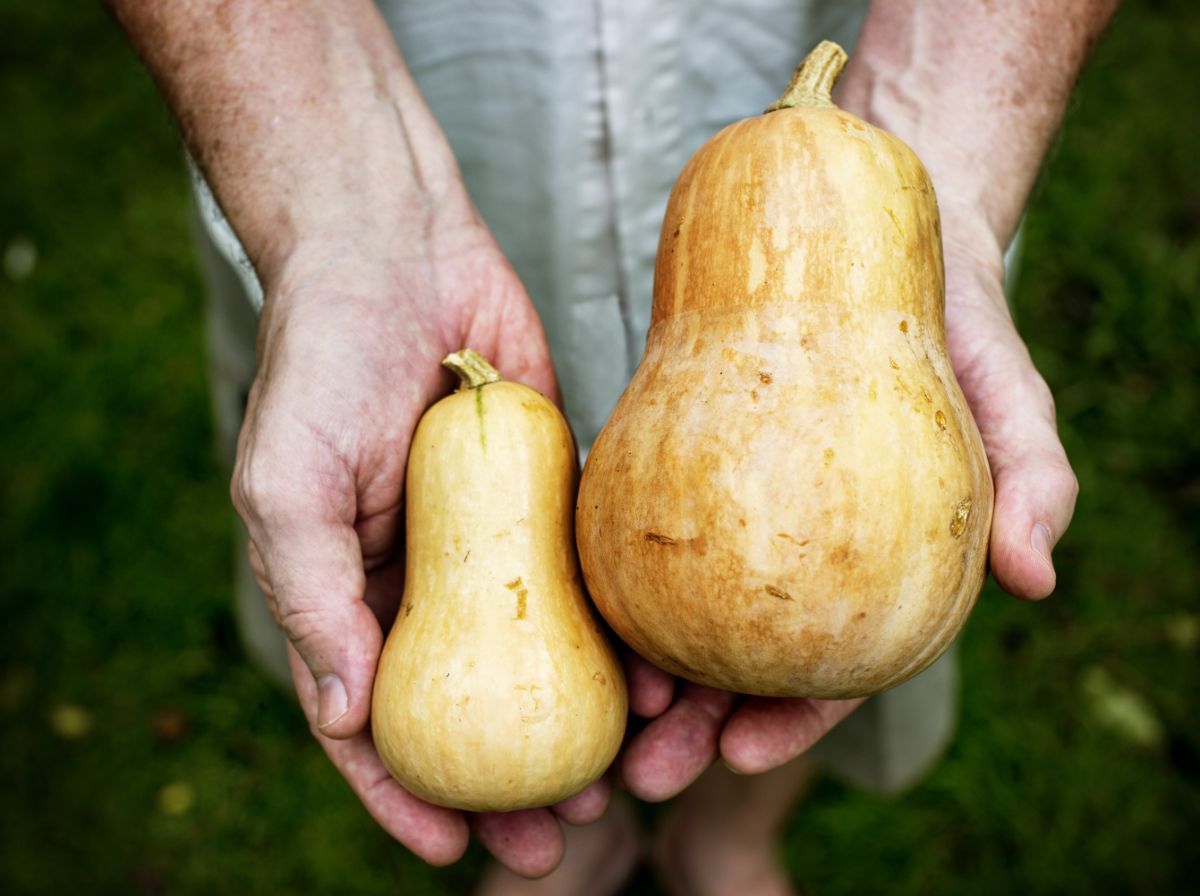
Vegetables and fruit stay fresh longer if they’re kept as whole as possible. So when you’re storing your food harvest in your root cellar, make sure you store your crops whole. Carrots and other root vegetables should have their greens clipped away, but you will want to leave an inch or two of stems on your root veggies to keep them from drying out.
If you’re planning on keeping pumpkins, squash, and gourds in your cellar, cut the fruits from the plants’ vines with sharp pruners and leave a few inches of stem attached to each of your squash-type plants. This will keep them from drying out, but it will also make it harder for bacteria to infiltrate the fruit and spoil it!
4. Maintain the right environment.
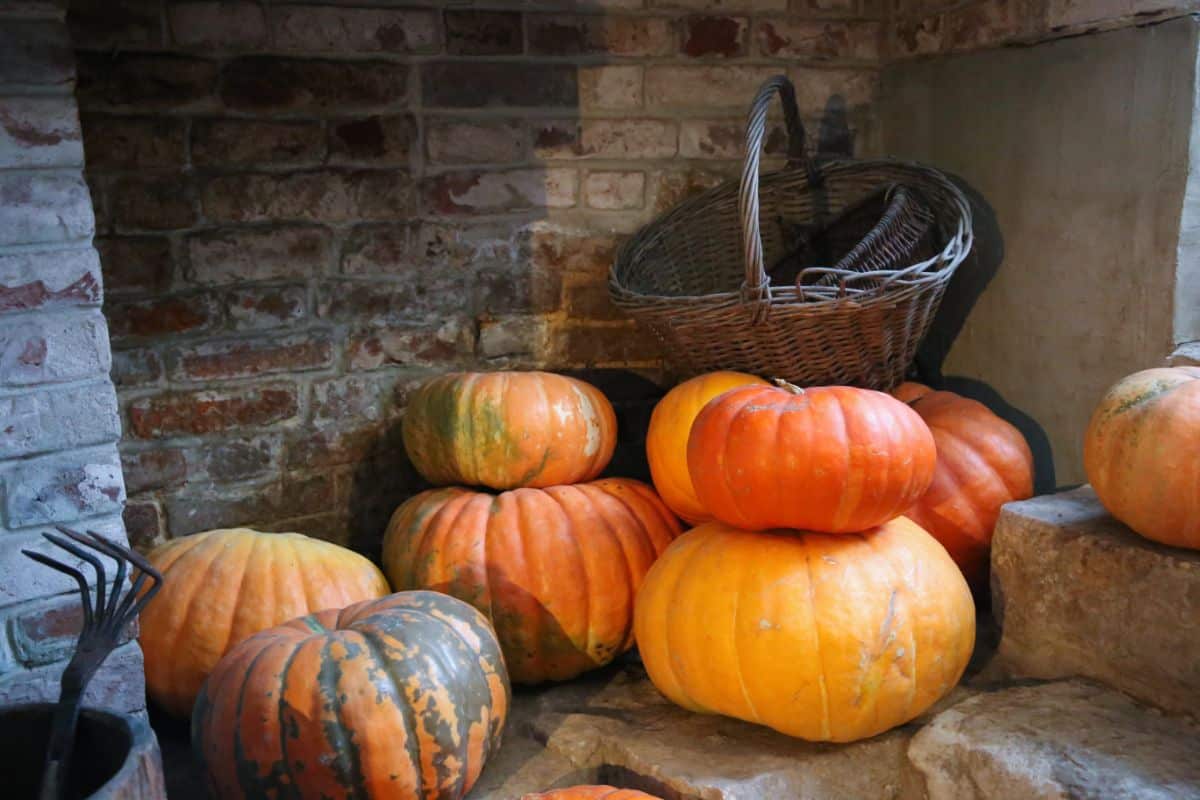
Different fruits and vegetables have different storage recommendations for root cellars. For instance, carrots need relatively high humidity levels so they won’t get wrinkly, but excess humidity can spoil garlic and onions. While this can be a bit confusing, it’s very helpful to research the particular root cellaring recommendations for the types of foods you’d like to store so you can get the storage environment as close to perfect as possible!
To help you get started, we have a full guide on root cellaring essentials right here, which contains guidelines about humidity, lighting, and temperature for root cellars. However, in general, most foods will store best in low-light environments with approximately 80 to 95% humidity and an average temperature of between 32 and 40F. Investing in a thermometer and hydrometer will help you keep track of the environmental conditions in your root cellar and make it much easier to adjust those conditions if needed.
5. Only store pristine produce.
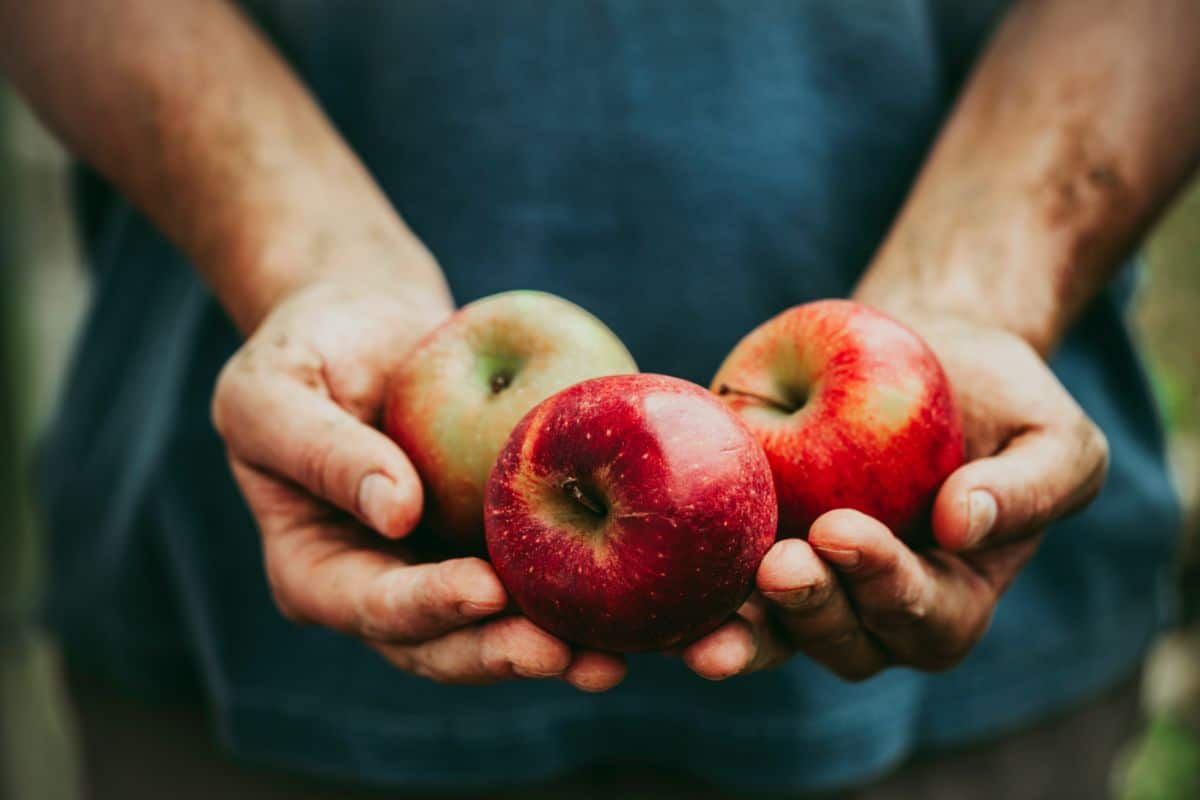
As the old saying goes, “One bad apple will spoil the bunch,” and that certainly holds true for root cellars. During the growing season, produce can develop damage from pests, diseases, and other environmental factors. While produce may still be edible, damaged or bruised produce won’t last as long in root cellars.
Curing can help some lightly damaged produce store better, but apples, pears, or vegetables with worm holes or bruises are not good candidates for root cellaring. Instead, these foods should be eaten right away or preserved with other food preservation methods. Save your root cellar shelves for damage-free produce, as these foods will last the longest!
6. Cure vegetables that need curing.
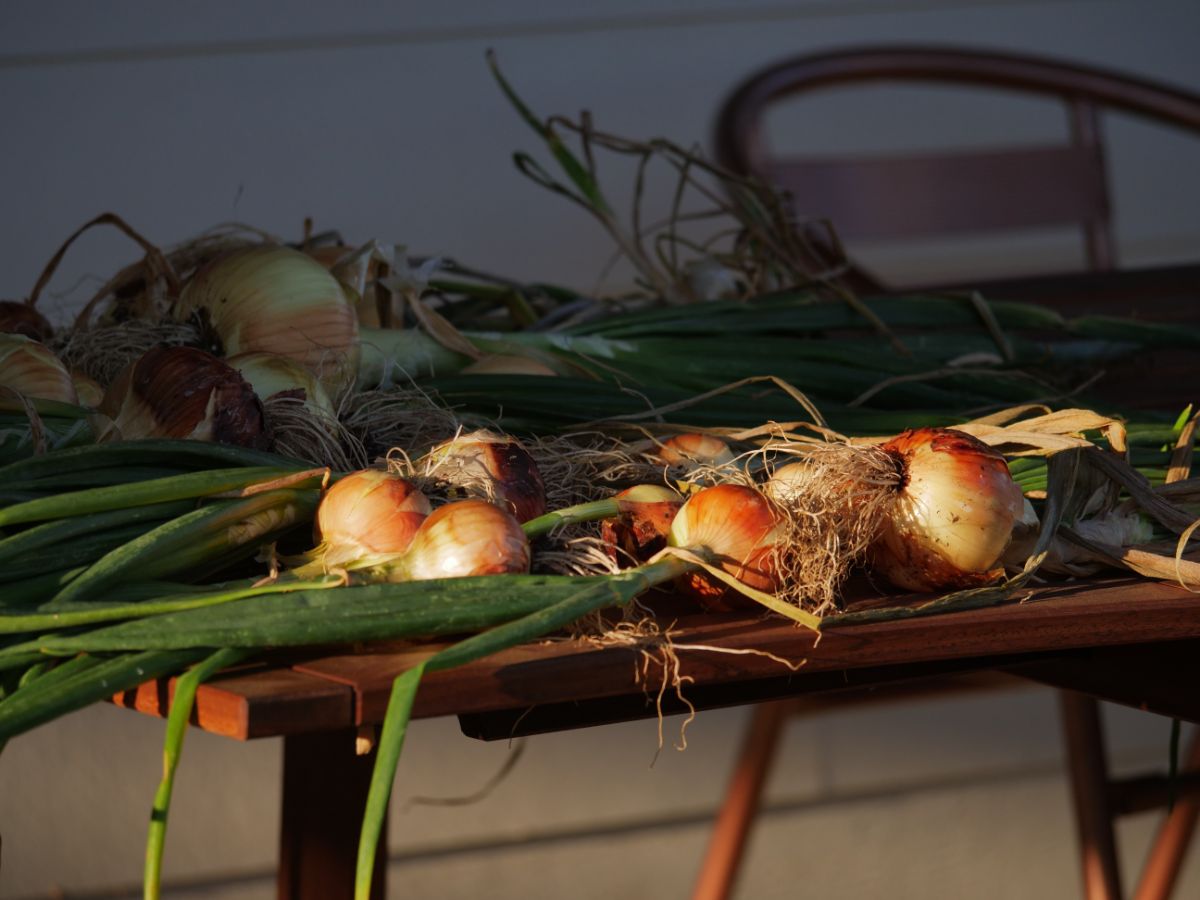
Not all vegetables need to be cured, but crops like potatoes, sweet potatoes, pumpkins, winter squash, garlic, and onions all benefit from curing.
Curing is a fancy term for a simple preservation technique in which food crops are left out in a warm, dry area for a few days to weeks. During this period, excess moisture evaporates from the produce, which reduces the chances that mold and mildew will develop on foods when they’re placed in a root cellar. Curing also allows produce skin to harden slightly, and it encourages minor cuts and scrapes to be callous over, locking in moisture and locking out bacteria!
Different foods need to be cured for different lengths of time, but in general:
- Potatoes should be cured for about 2 weeks.
- Pumpkins should be cured for about 10 days.
- And garlic should be cured for about 10 to 14 days.
7. Don’t wash produce.
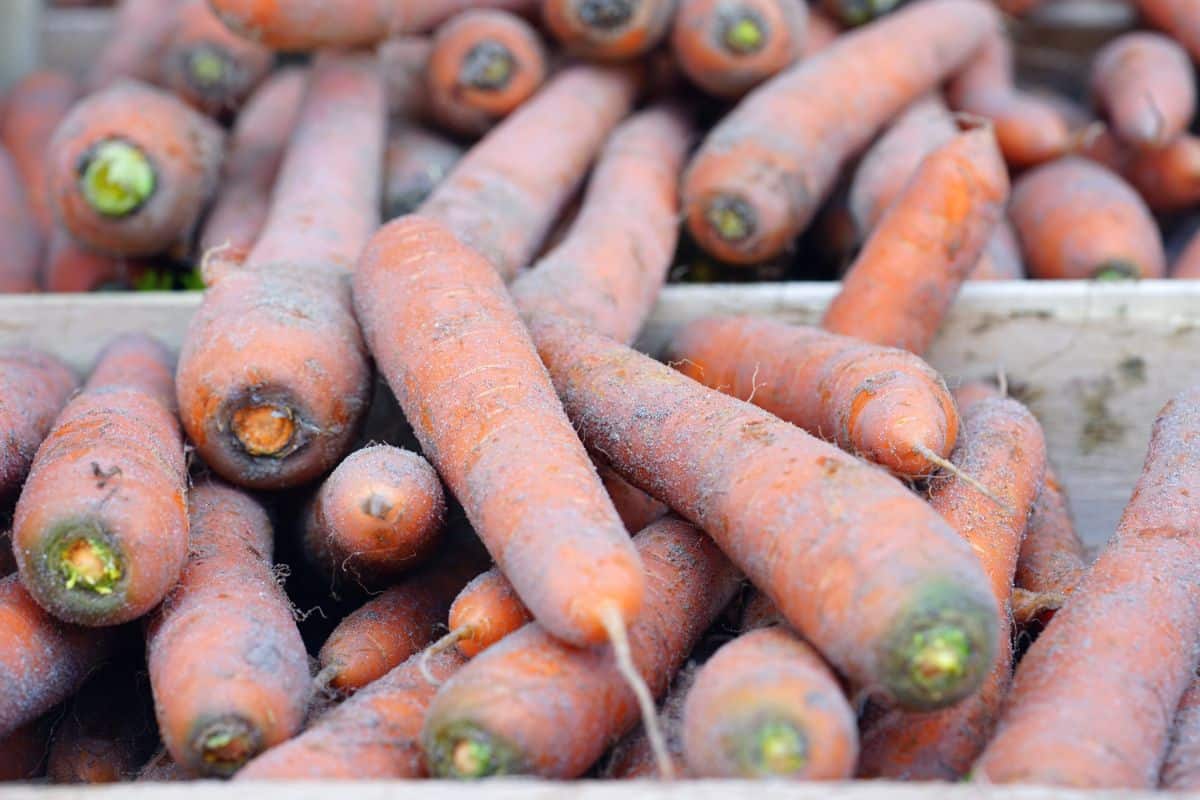
After digging up all your carrots and root vegetables out of your garden, it can be tempting to wash your produce right away. But if your goal is to keep root veggies in a root cellar, hold off on that wash!
Washing produce before storing adds moisture to your crops, which can promote mold and mildew growth. A better solution is to leave crops out to dry for a few hours and then brush away as much dirt as you can with a soft brush or your fingers. A little extra dirt shouldn’t harm your vegetables while they’re in your root cellar, and you’re going to wash them anyway before you cook with them!
8. Harvest and handle with care.
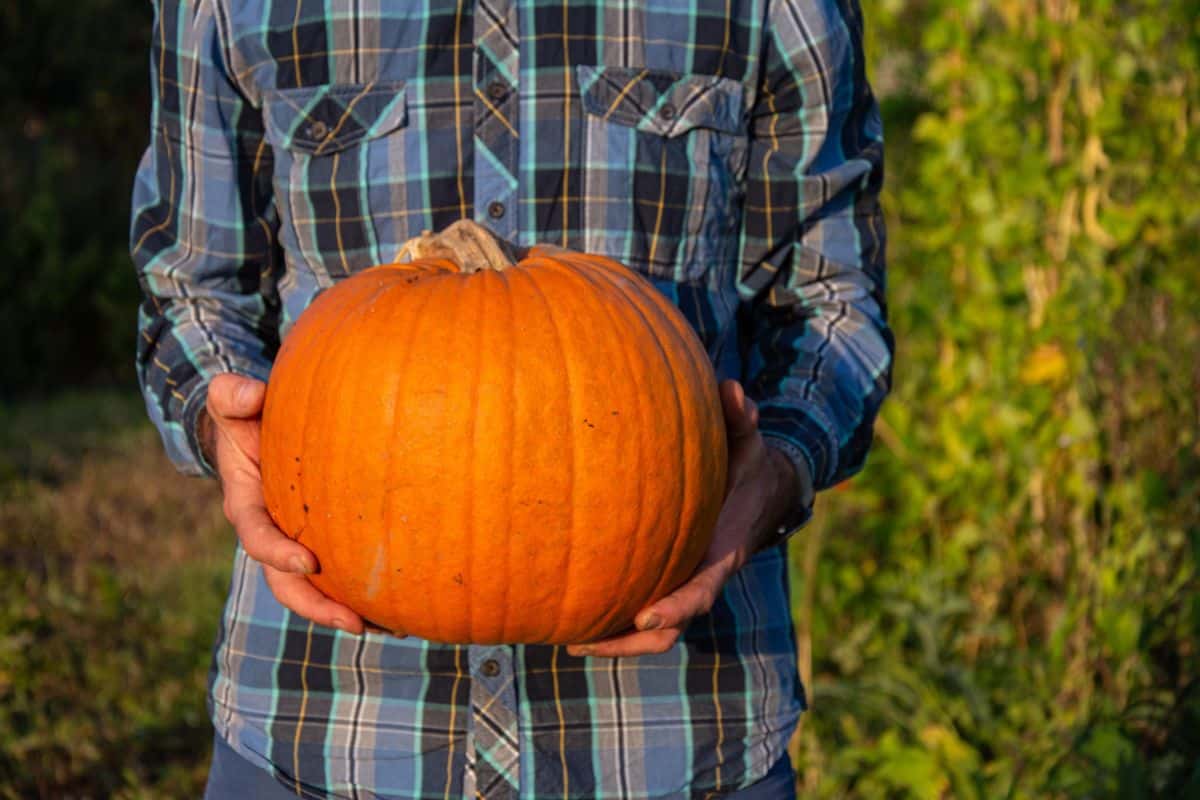
Since damaged produce doesn’t last very long, you’ll want to handle your fruit and vegetables as gently as possible when you’re harvesting and relocating your produce from your garden to your root cellar.
Root vegetables should be gently lifted out of your garden soil with your hands or a shovel to avoid breaking the roots off in the ground. If the roots are super stuck, you may be able to shimmy them out of the ground with the help of a hori-hori or hand trowel but be careful not to cut into your veggies if you can help it. You can also water your garden well before you intend to harvest, as this will soften the soil and help roots lift up more easily.
After harvesting, take care when you’re placing foods in baskets or buckets to make sure they don’t bump around too much and get bruised. If you’re carrying weighty foods, like pumpkins, remember to carry them with two hands and don’t lift them up by their stems. In-tact stems will help gourds, pumpkins, and squash last longer in winter storage!
9. Use the right storage containers.
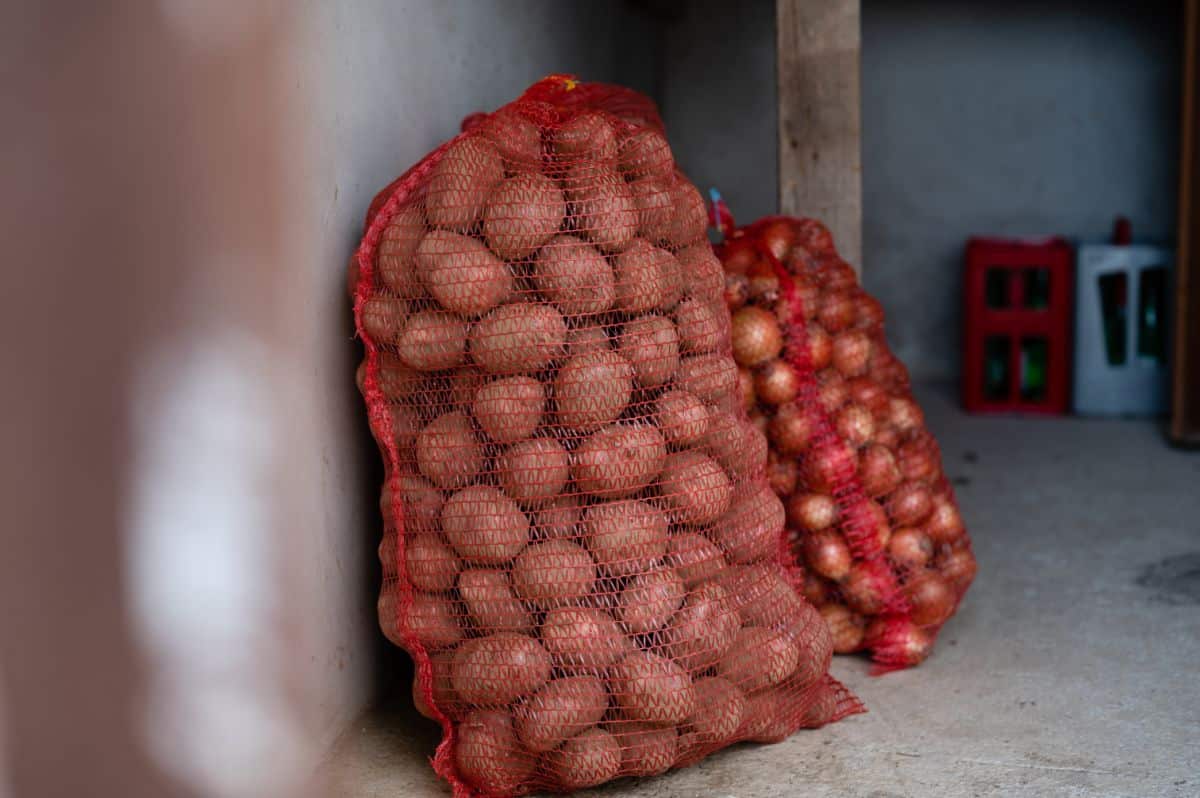
Produce can be stored on shelves or in crates or boxes in your root cellar, depending on your organizational style. But if you’re keeping produce on shelving, it’s best to use wooden shelves as wood doesn’t conduct heat the way that metal does.
If you’re storing crops in crates or baskets, choose natural materials like wood or sturdy cardboard boxes, or keep your produce in well-ventilated plastic crates. Selecting storage containers with plenty of air holes will allow moisture to evaporate, and it also keeps ethylene gas from building up around foods and spoiling them. Any storage bags you use should be filled with plenty of air holes as well, or you may want to keep produce in fine mesh baggies to ensure that they have plenty of breathing room!
10. Store root vegetables in moist sand.
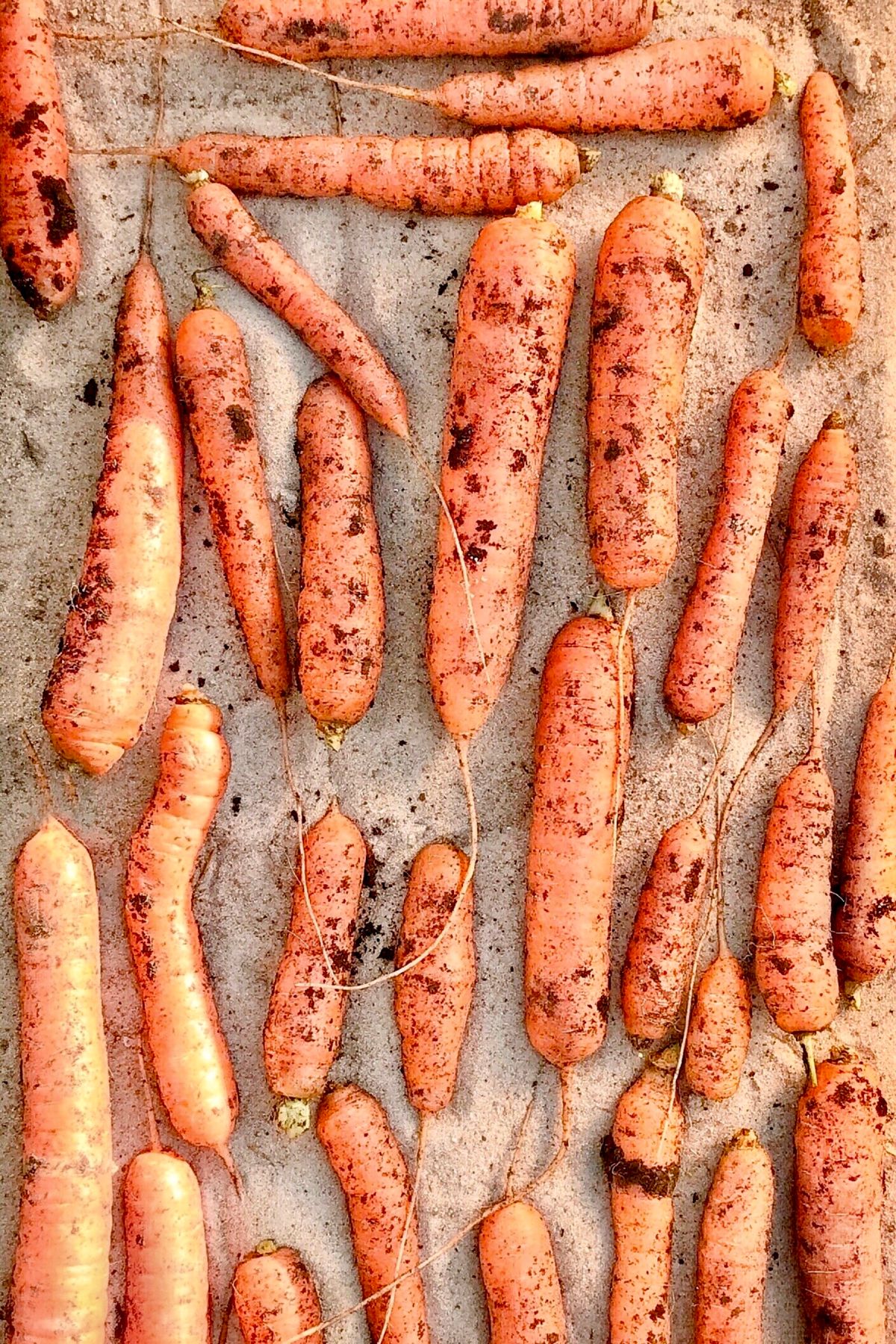
Carrots, beets, turnips, and other root vegetables are typically stored in moist sand or sawdust. This may sound strange, but the damp substrate keeps root vegetables from drying out as quickly, and it can significantly extend the shelf life of many root crops. The trick here is to store your veggies in sturdy containers that are large enough to hold the root vegetables as well as their heavy substrate.
Food-grade plastic buckets or storage totes can work well if you’re keeping root crops in the sand, but you’ll want to leave the lids off of your storage containers to prevent moisture from building up too much. Carrots and other root crops can be sunk either vertically or horizontally in sand, but it’s important that you space your vegetables out to keep them from touching. This will limit the spread of mold and other problems and keep your produce fresh for longer!
11. Keep vegetables and fruit separate.
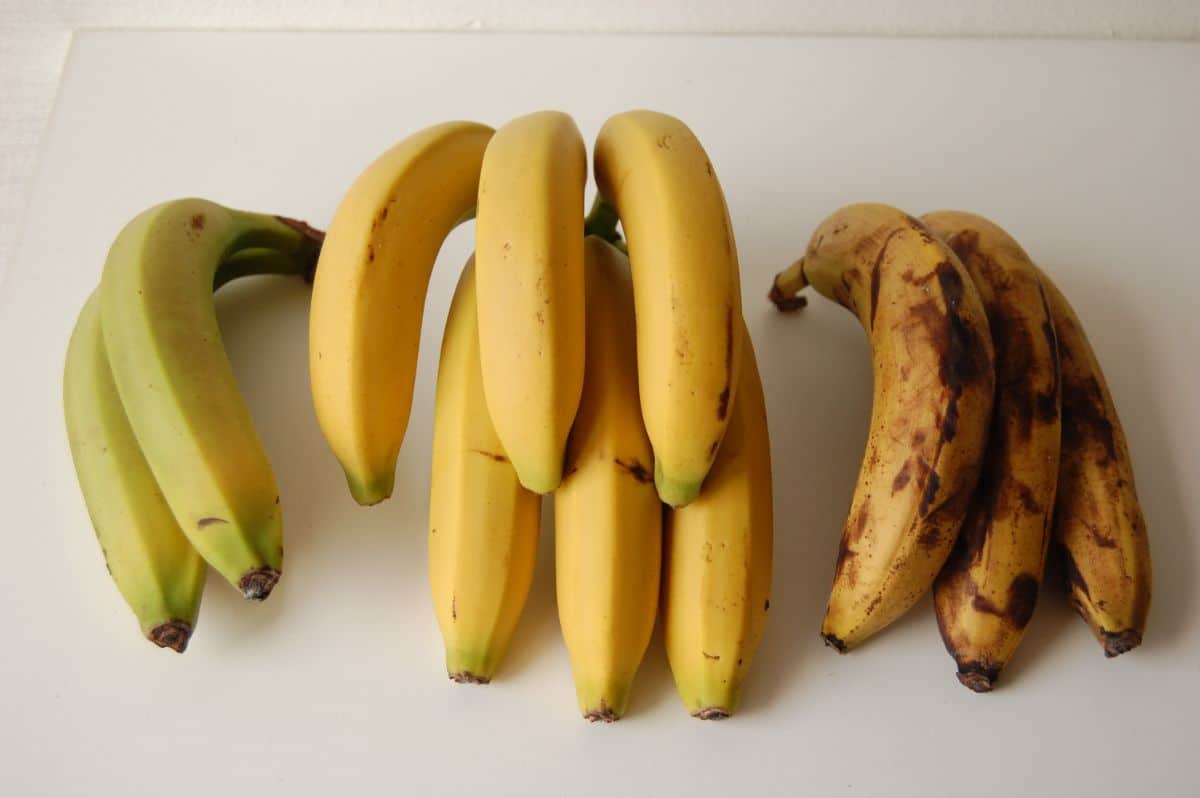
Apples, pears, and other fruit crops release ethylene gas, which can build up in root cellars and cause vegetables and other produce to ripen. But if ethylene gas isn’t kept in check, it can also make other produce rot and decay faster, which is never a good thing.
Keeping root cellars well-ventilated is one way to reduce ethylene gas buildup, but it’s also a good idea to store ethylene-producing foods away from foods that are sensitive to ethylene. Some examples of foods that emit ethylene gas include:
- Apples
- Pears
- Peppers
- Tomatoes
- Melons
- Figs
- Quince
While foods that are sensitive to ethylene include:
- Brassicas
- Carrots
- Potatoes
- Sweet potatoes
- Squash
- Pumpkins
12. Separate strong-smelling vegetables.
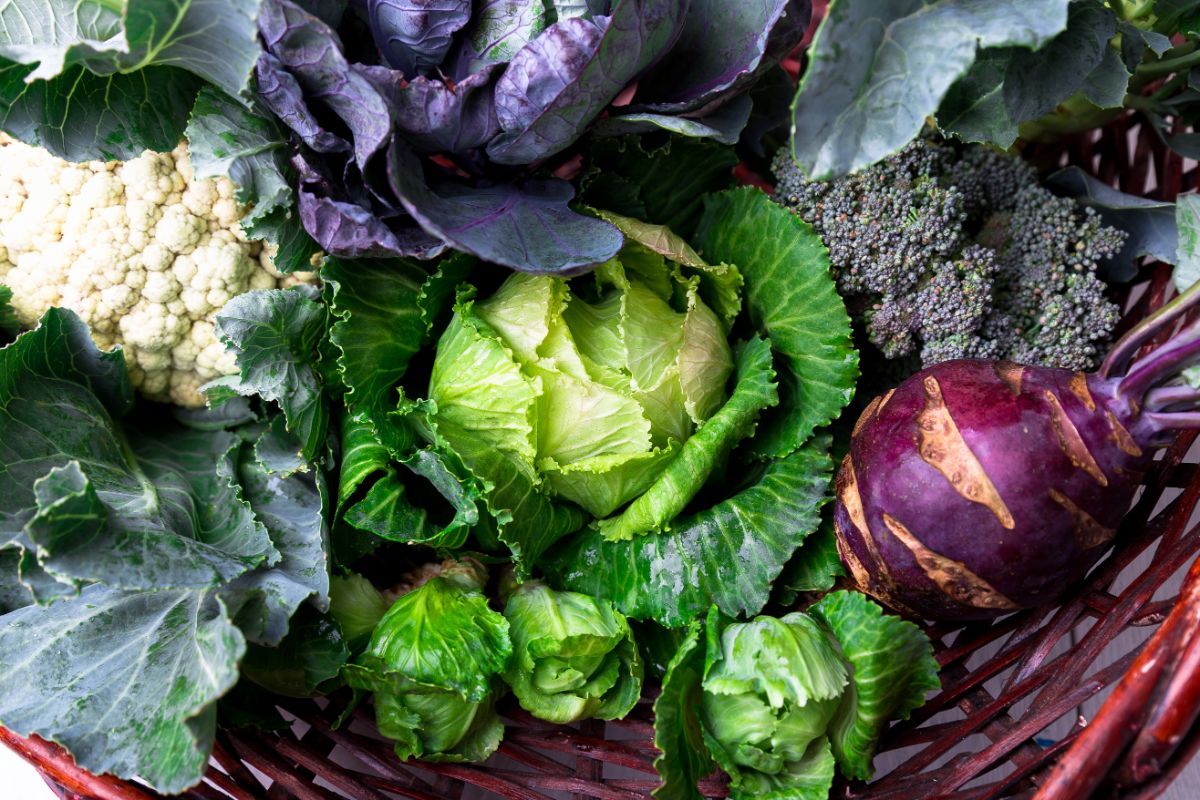
Cabbage, turnips, and Brussels sprouts are well known for their pungent odor. While you may not mind the scent of these “smelly crops” while they’re cooking, the aroma of Brassicas and other strongly scented foods can build up in root cellars. Even worse, sometimes the scent of these foods can permeate nearby food crops and leave behind a smelly, cabbage-like odor and aftertaste.
If you love that cabbage-y taste, that might not bother you. But if you want to keep your produce pristine, you may need to store your strongly scented food crops on their own in an outdoor root cellar. You can also place these “stinky” veggies in dedicated storage crates, but they may end up perfuming your root cellar anyway!
13. Know where to place different foods.
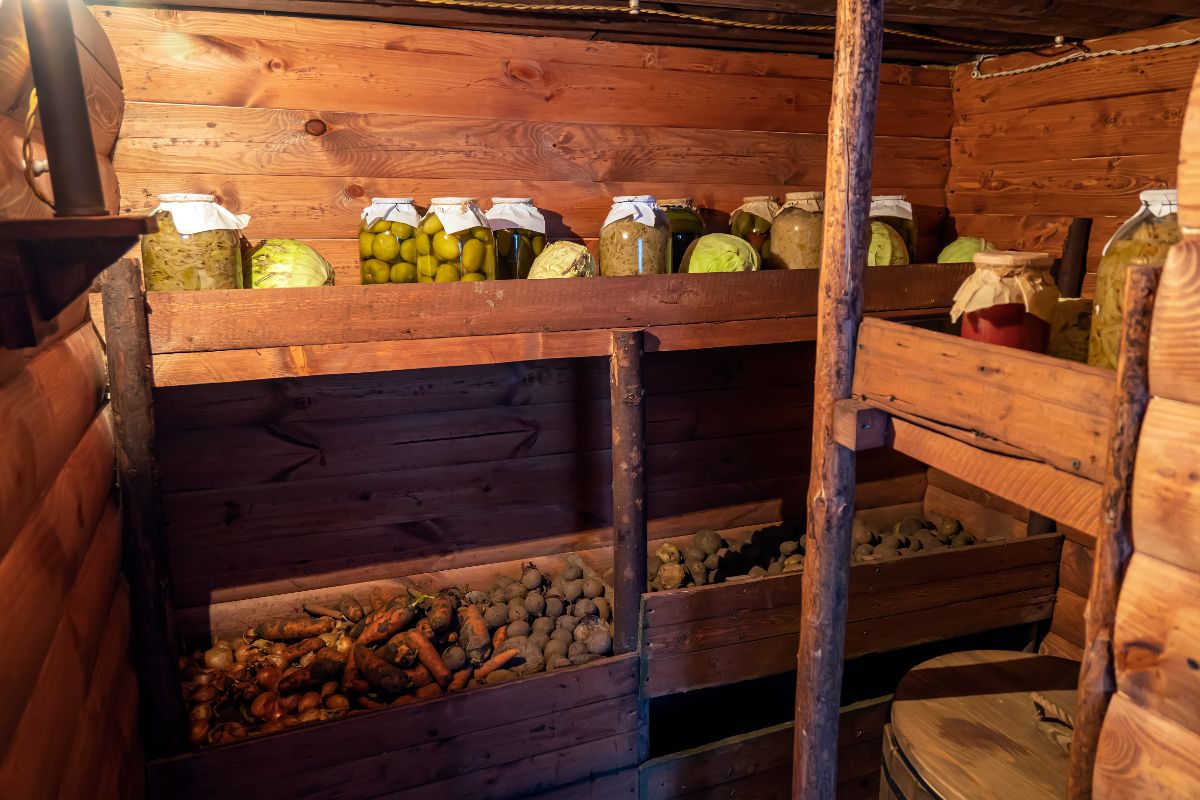
Different areas of root cellars have different temperature and humidity levels. For instance, humidity levels are higher toward the ground and lower towards the ceiling. Humidity is also typically lower near windows and doors and higher towards the rear of root cellars.
If you know you’re storing crops that love lots of moisture, you may want to keep these foods on lower shelves and place crops that like drier conditions up high. Temperatures also fluctuate more towards windows and doors, and exterior walls may stay cooler during winter as well!
14. Space veggies apart.
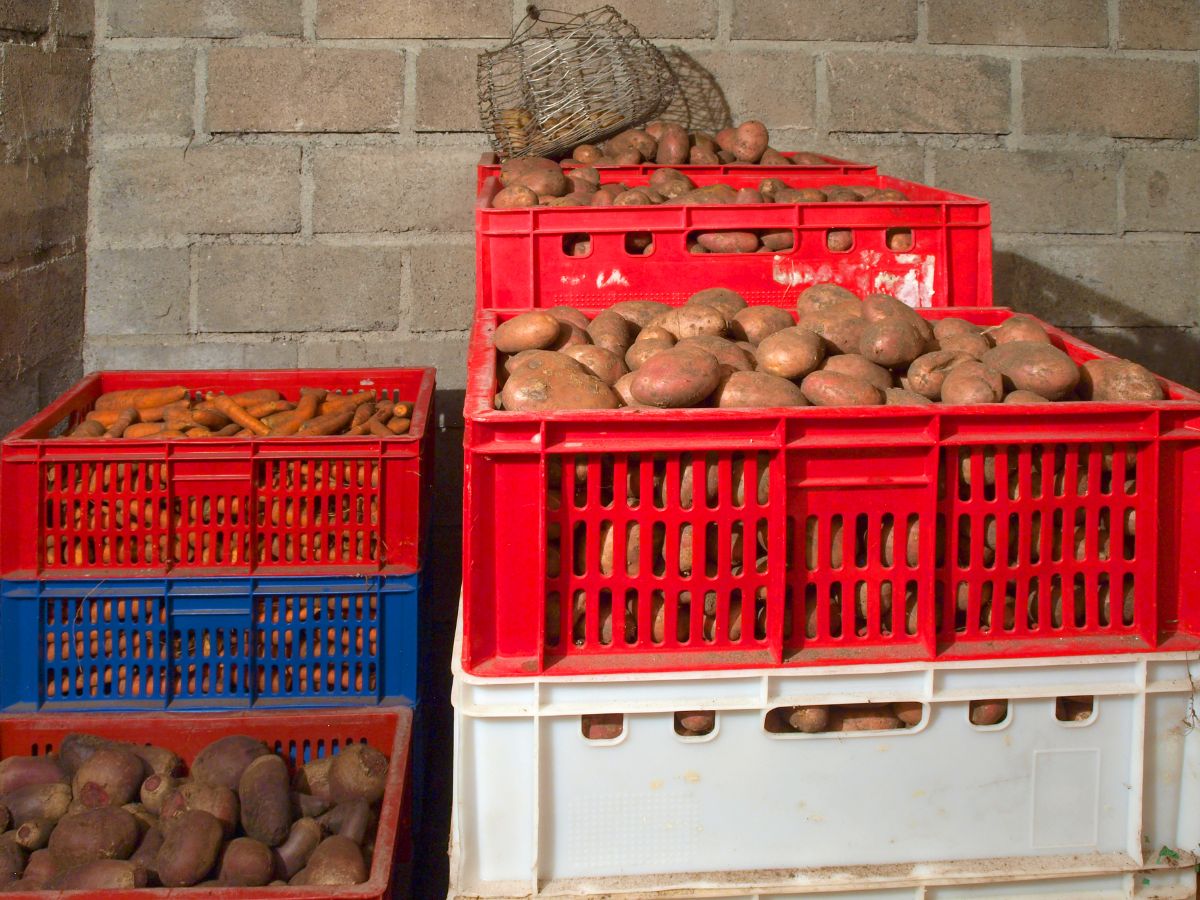
While carrots and other root crops should be spaced apart when they’re stored in sand, spacing other types of vegetables out is also recommended when root cellaring. Pumpkins, apples, pears, and other crops should have plenty of breathing room in between them, regardless of whether you store them in shelves, boxes, or crates.
Separating foods out will allow air to flow unencumbered, which prevents moisture from building up and encourages mold. Airflow also keeps ethylene gas in check, and this will help your food stay fresh for longer, too!
15. Wrap fruit to contain ethylene gas.

Keeping ethylene gas-producing foods separated from ethylene-sensitive foods is a good place to start. But if you want to preserve the shelf life of your foods even further, you may want to wrap ethylene-producing foods like apples in a bit of newspaper before you place them in your root cellar.
This extra insulation will prevent your fruit from bruising, but, more importantly, it will also trap in some of the ethylene gas so it doesn’t spread to nearby veggies.
16. Monitor temperature and humidity.
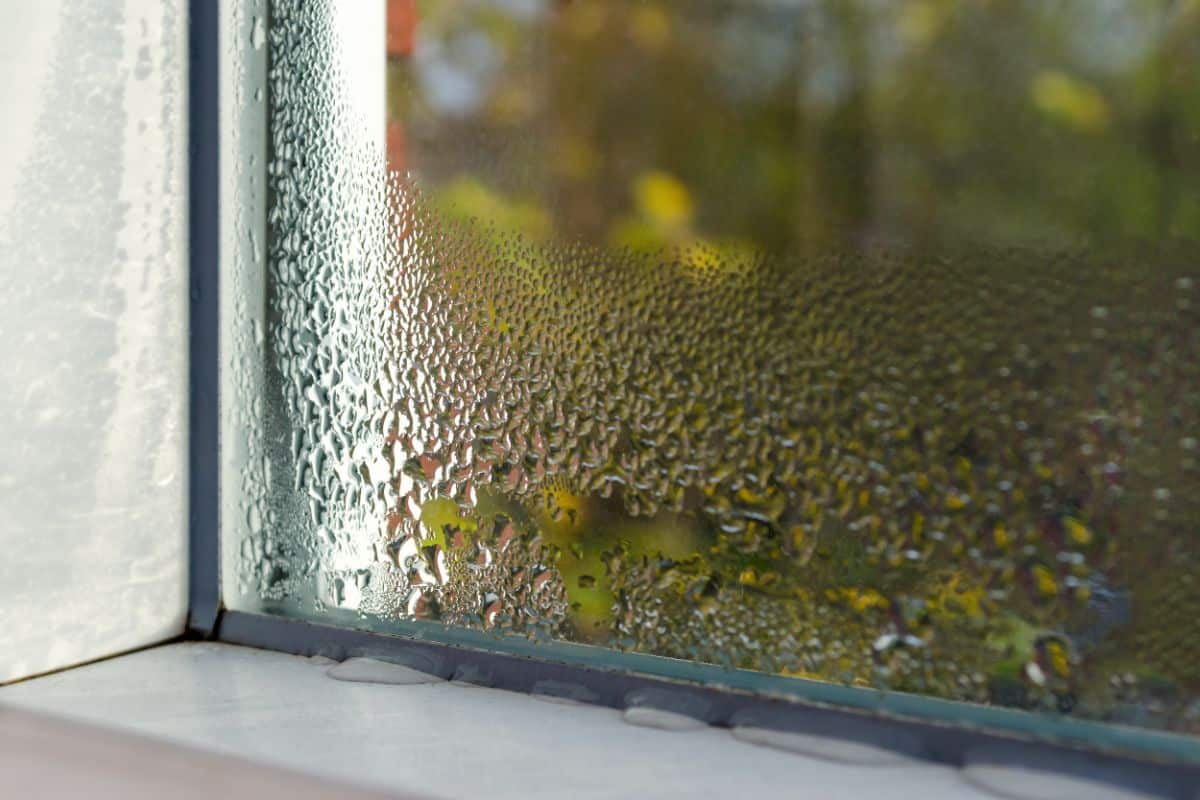
Maintaining proper environmental conditions in your root cellar is key if you want your produce to last through spring. But humidity, temperature, and light levels can vary throughout the year, so it’s important that you check in on your root cellar often.
If possible, check your root cellar every day or two to make sure temperature and humidity levels aren’t varying significantly. That way, if something goes amiss, you can act more quickly before your produce spoils!
17. Check crops often.
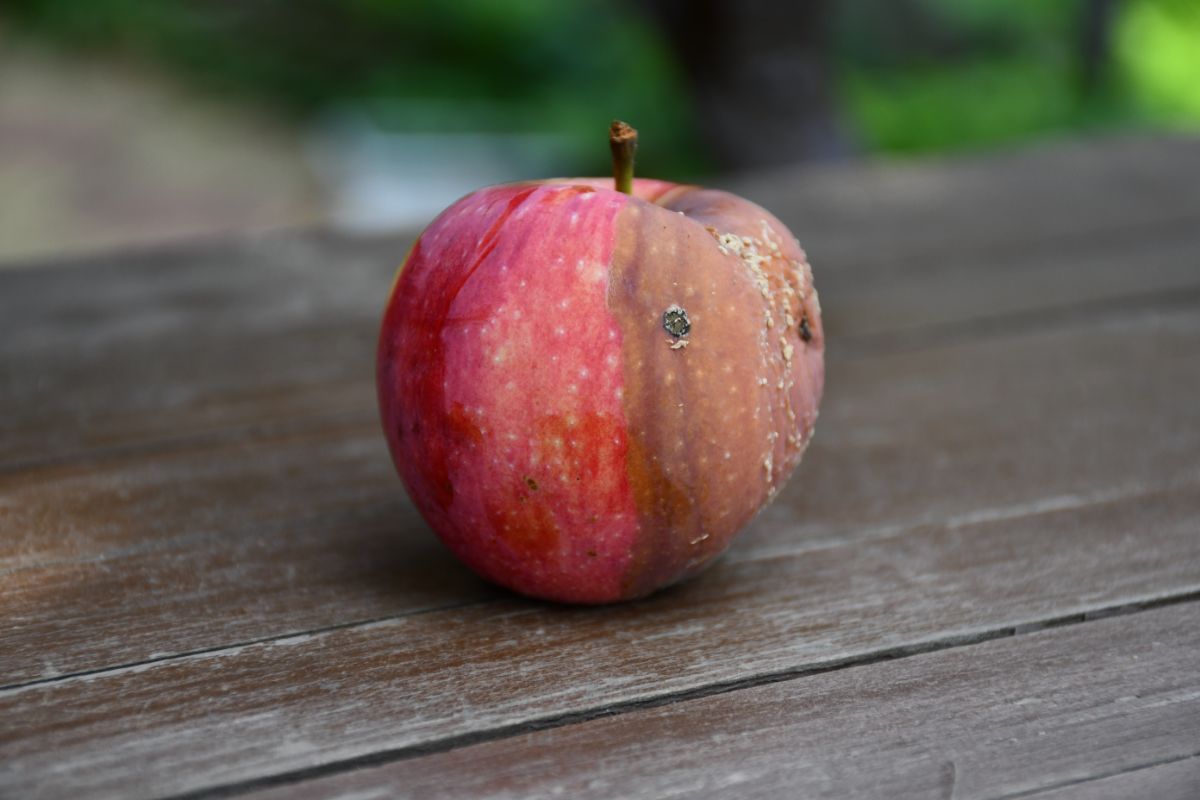
Root crops and sturdy fruit and vegetables will typically last for 2 to 8 months in a well-maintained root cellar. But that doesn’t mean that things can’t go amiss.
Sometimes we miss a worm-eaten carrot or a bruised apple, and that imperfect food can spoil more rapidly than we expect. If we don’t act quickly, it’s very possible that the rot in one vegetable or piece of fruit will spread throughout an entire storage container!
As devasting as this can be, you can easily limit the spread of mold and decay in your root cellar by monitoring your produce. Check bins, crates, and boxes over regularly and remove any crops that look like they’re past their prime. If those crops aren’t badly damaged, you can eat them right away, but if they’re unsalvageable, toss them in your compost pile and let out a sigh of relief, knowing that you caught that moldy apple before it spoiled the rest of your harvest!
18. Prevent freezing!
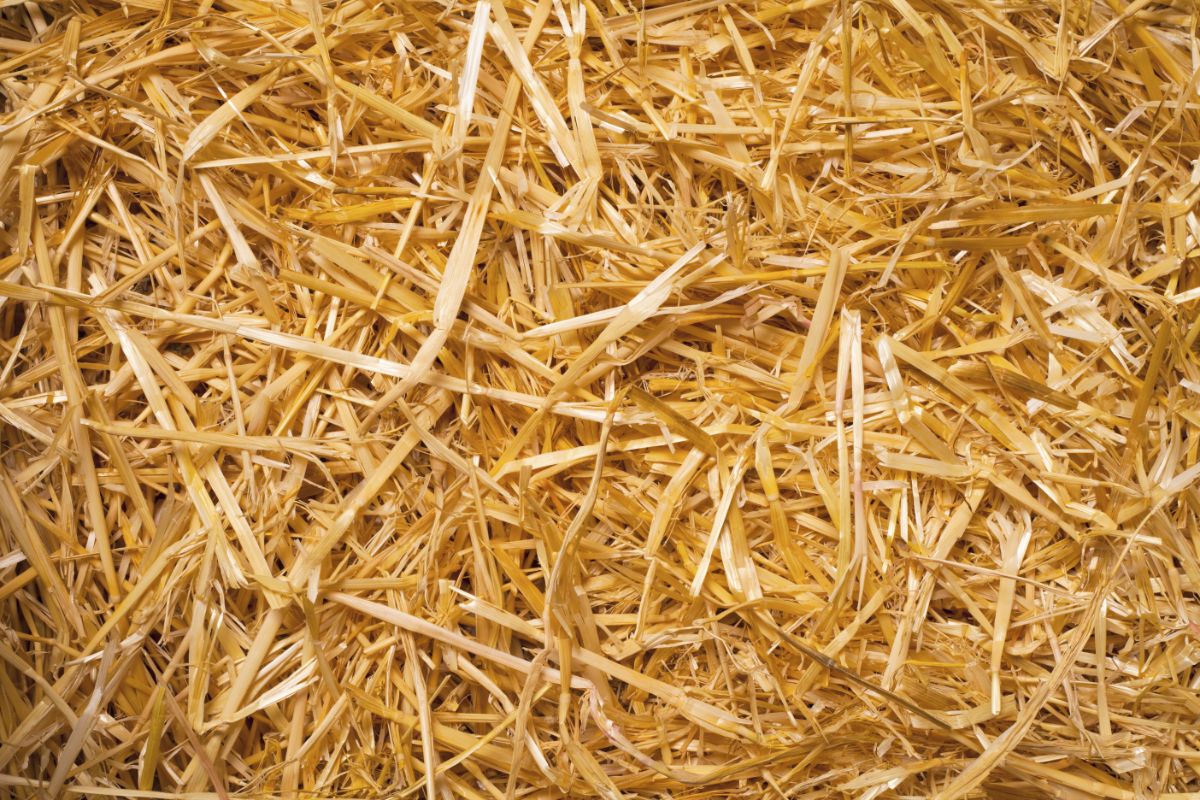
Root cellars are meant to stay cold. After all, they were the original refrigerators! However, root cellars should be kept above freezing temperatures as temperatures below 32F can damage produce and encourage rot.
If your root cellar is buried deep in the earth, you may not need to worry about freezing temperatures at all. But if you have a small root cellar in a drafty spot, you may want to bulk up your cellar with extra insulation. One easy insulation option for small outdoor cellars is to stack bales of straw over the door frame or root cellar barrels to keep the cold out.
Frequently asked questions
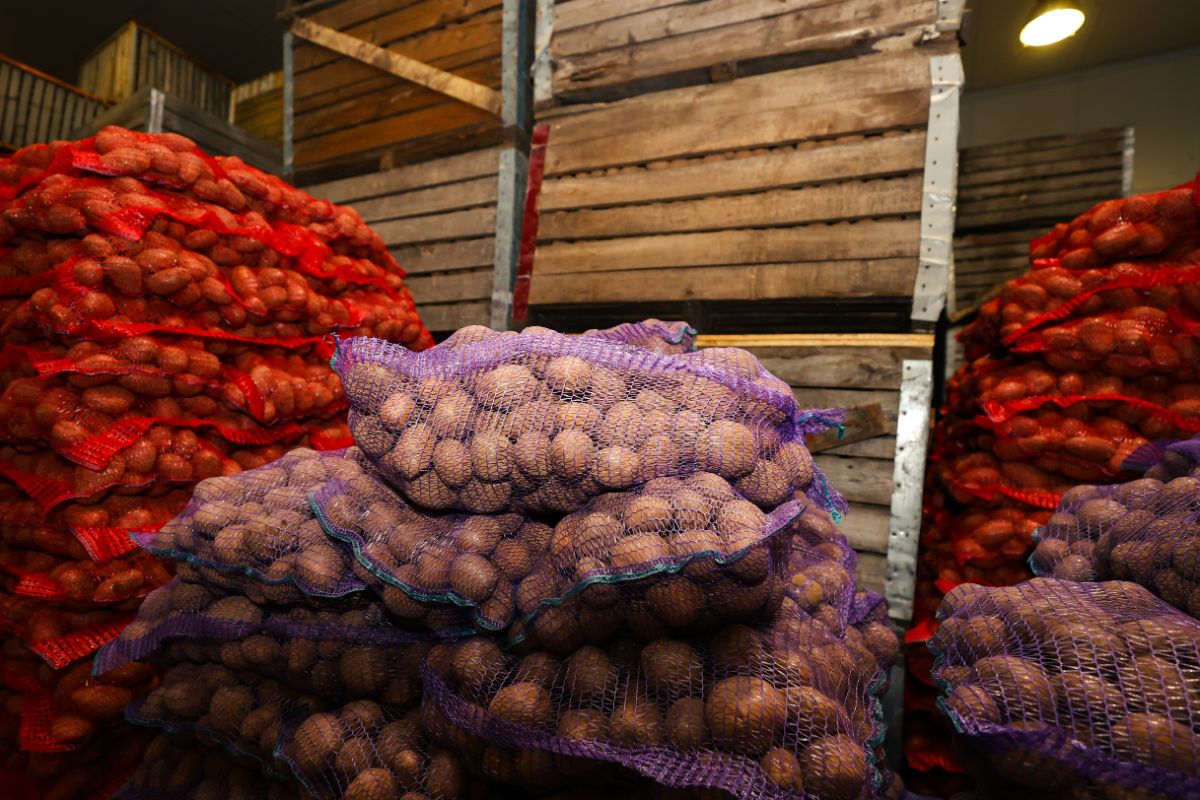
When properly stored, potatoes should last for about 5 to 8 months in a root cellar. Large, storage-type or russet potatoes typically last the longest in root cellars, while thin-skinned, new potatoes are better for fresh eating.
Different fruit and vegetable crops last for different lengths of time in root cellars, but most foods will last for about 2 to 8 months in a well-maintained root cellar. Maintaining high humidity and cool, but not freezing, temperatures will extend the life of your produce and keep your crops fresh for longer.
No, root cellars should not freeze. While root cellars are meant to be a chilly 32 to 40F, freezing temperatures can damage produce and speed up rot and decay.
Root cellaring works best in cold climates, and cellar temperatures can be difficult to maintain in warmer areas. However, you may be able to keep a functioning root cellar in hot regions by burying root cellars deep in the earth and insulating them well. Adding ventilation to your root cellar can also allow hot air to escape, and this will keep temperatures lower.
Maintaining good airflow around your produce is key if you want to inhibit mold in a root cellar. Root cellars are meant to be humid places, but too much humidity will promote rot. To avoid this, make sure you space your fruit and vegetables apart from each other, build storage shelves at least 1” away from walls, and use storage crates and boxes with plenty of air holes.
Basement root cellars in unfinished basements can be quite inexpensive. If your basement is naturally cool and humid, you may just need to install a few wooden shelves to store your produce on. However, if you don’t have the space for a basement root cellar, outdoor barrel root cellars can be created by sinking a trash can or food-safe barrel into the ground, filling it up with root crops, and placing a bale of straw over the top for extra winter protection.
Summary
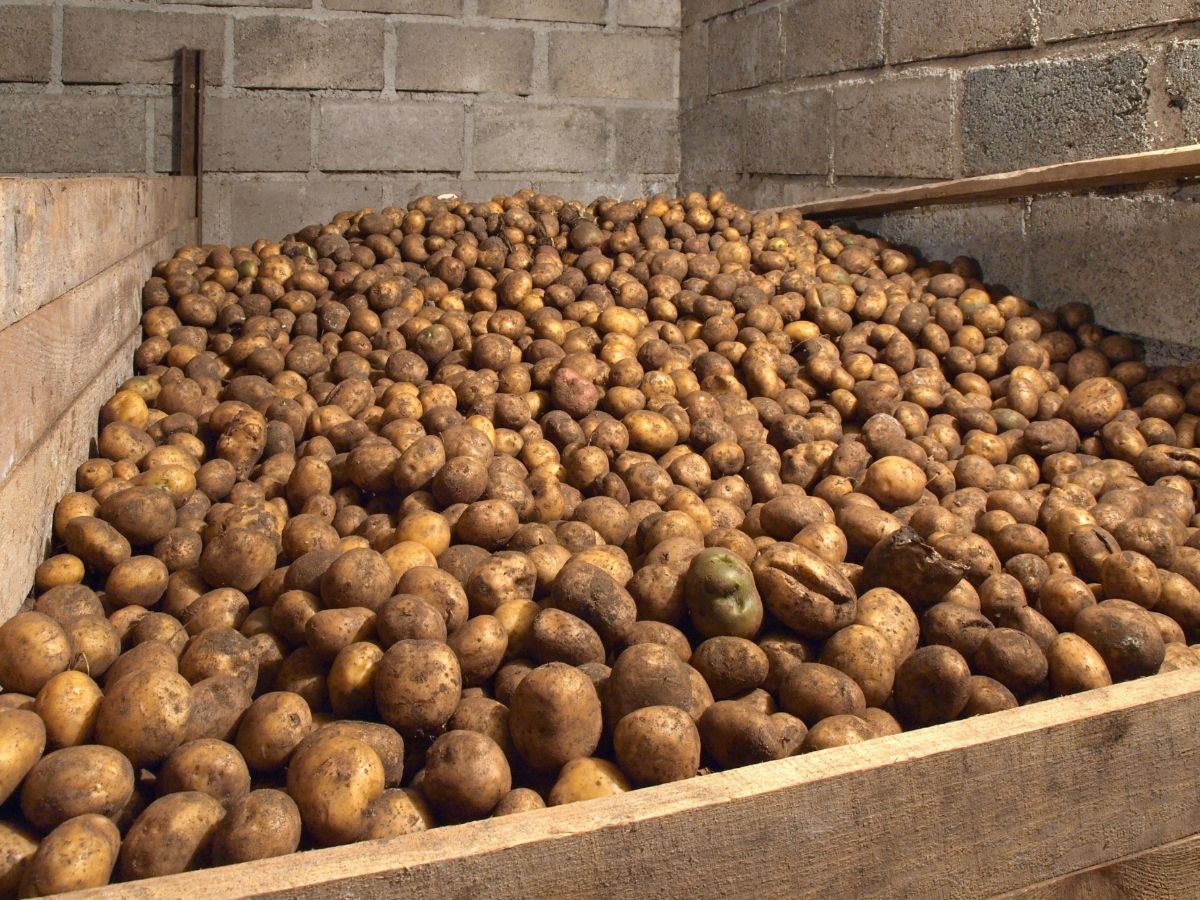
In our modern world, we’ve come to think of kitchen gadgets like refrigerators as absolutely essential items. But long before the advent of electricity, farmers and gardeners were able to store and maintain food crops through the winter months in cool root cellars. These simple structures moderate temperature and humidity for us and keep foods fresh without refrigeration for months and months.
Building a root cellar isn’t difficult, but if you want to master the art of root cellaring, the simple suggestions in this guide can help. You may also want to peruse our guide on how to keep winter squash in a root cellar for even more food storage tips and tricks!

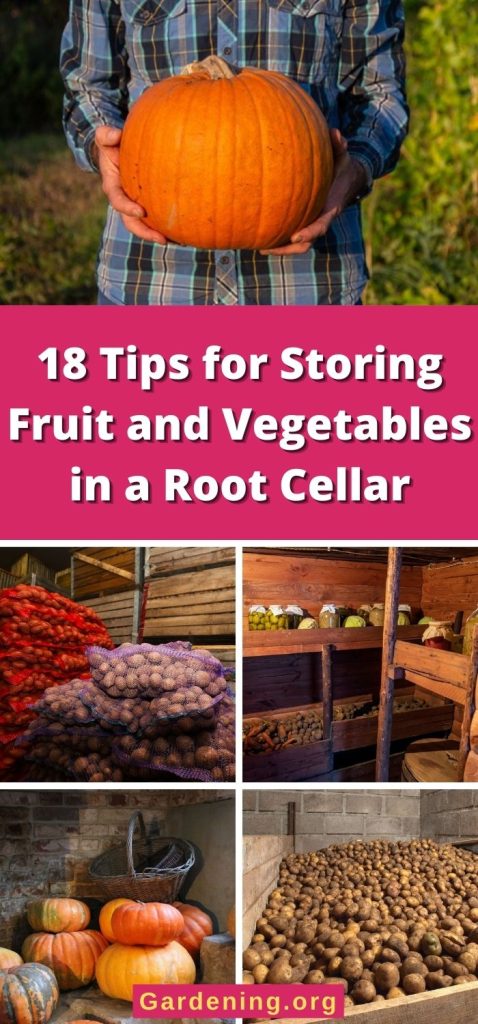
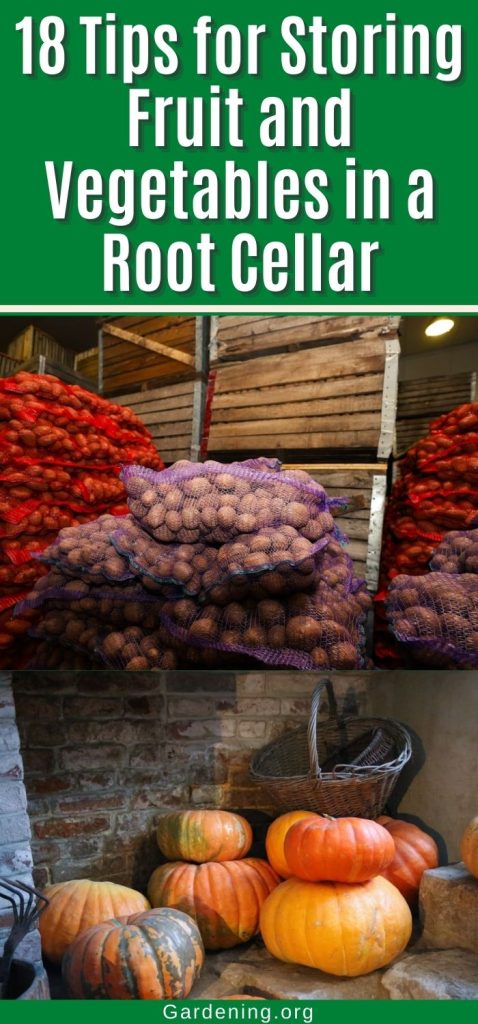
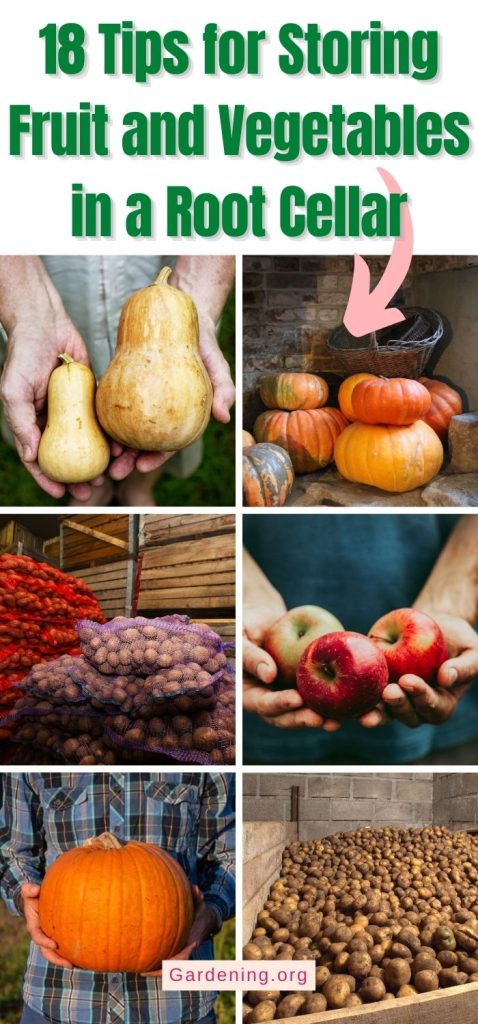
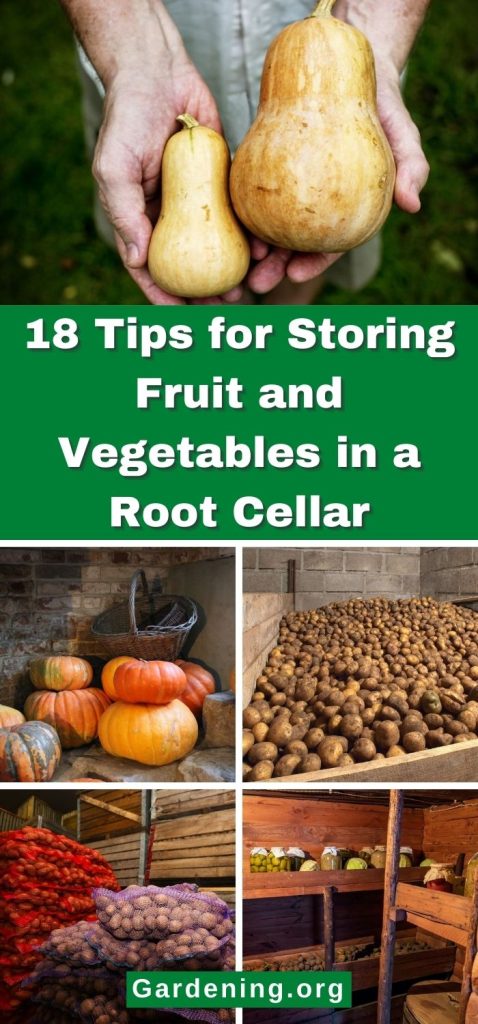
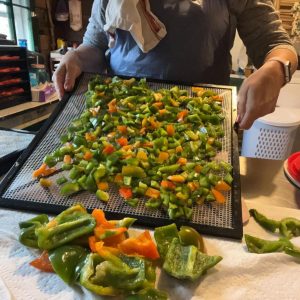
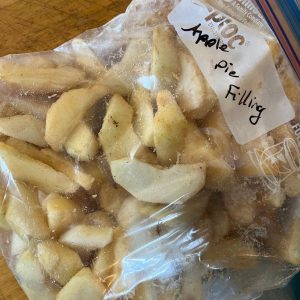
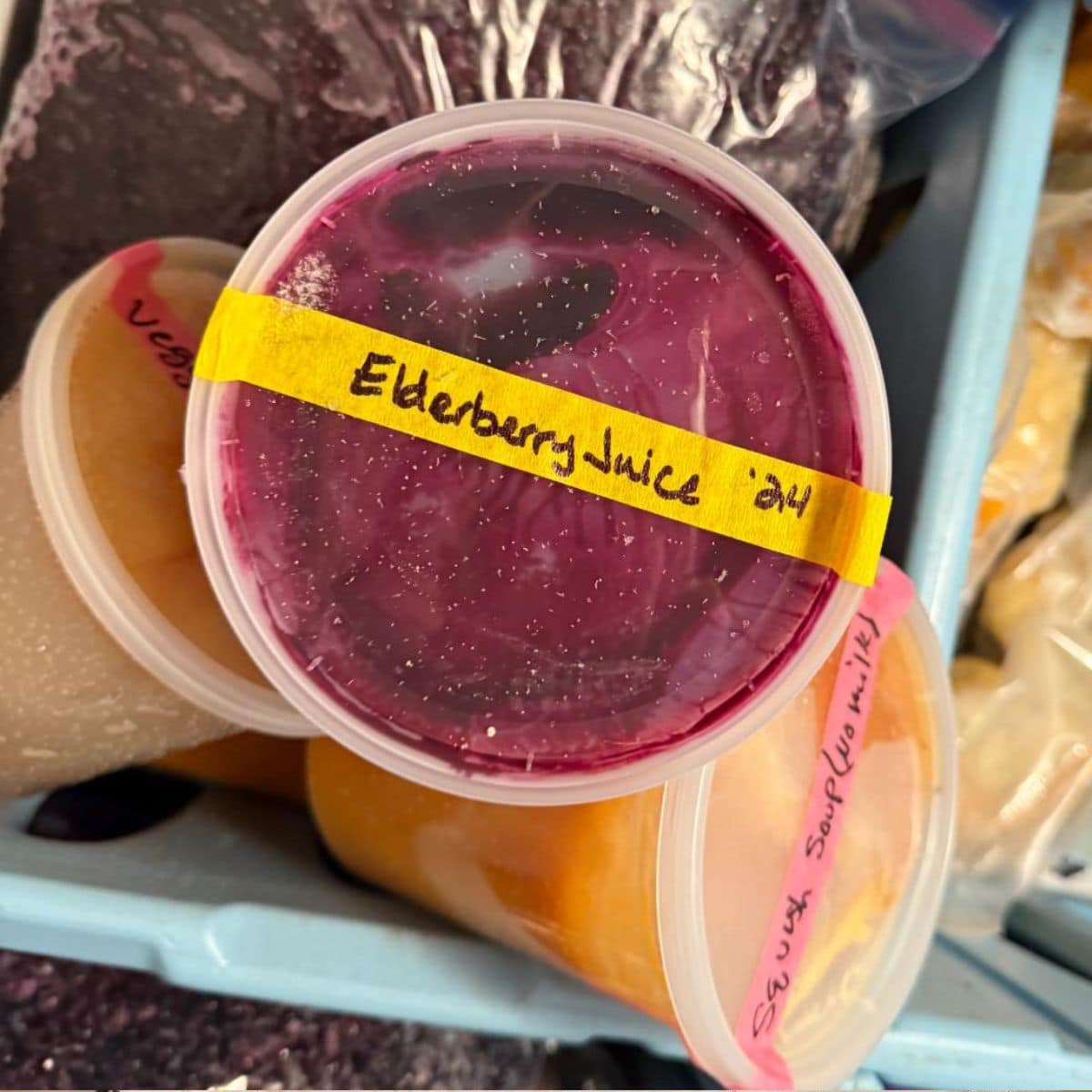
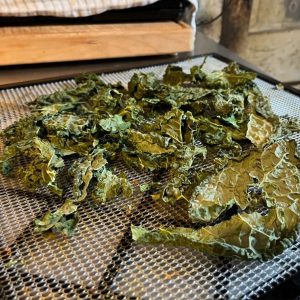
Leave a Reply